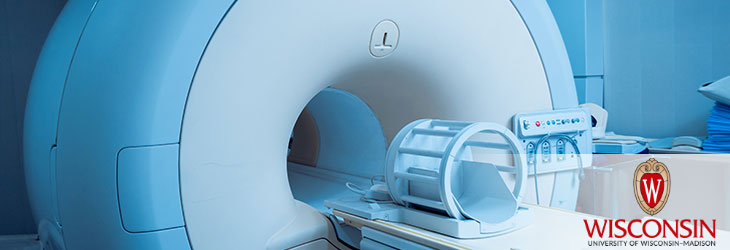Radiation Therapy

Device for Placement of Needles and Seeds in Radiotherapy
WARF: P03190US
Inventors: Bruce Thomadsen, Warren D'Souza, Michael Meltsner
The Wisconsin Alumni Research Foundation (WARF) is seeking commercial partners interested in developing an automated stage that improves the insertion of brachytherapy implant needles for the treatment of prostate cancer.
Overview
Prostate cancer is often treated today by brachytherapy, a procedure that involves implanting tiny radiation sources, known as seeds, in and around the tumor. Guided by real-time ultrasound imaging, surgeons usually implant seeds into the prostate through needles inserted into holes in a rectangular plate. Most often, these plates contain a fixed grid pattern of holes spaced 0.5 cm apart.
UW-Madison research has recently shown that closer spacing of the seeds could help optimize the radiation dose to the tumor while sparing healthy tissue. In addition, the ability to insert needles at angles, rather than straight-on as dictated by the plate, could also improve implant quality.
UW-Madison research has recently shown that closer spacing of the seeds could help optimize the radiation dose to the tumor while sparing healthy tissue. In addition, the ability to insert needles at angles, rather than straight-on as dictated by the plate, could also improve implant quality.
The Invention
UW-Madison researchers have now developed an automated stage that allows the insertion of needles at freely selected, rather than fixed, locations within the prostate and at optimum insertion angles. Under the control of a computer program, the automated stage guides the insertion needle, loaded with seeds, to a selected position. Once positioned, the needle is either automatically inserted into the prostate or the surgeon inserts it by hand, receiving tactile feedback from the device when the proper depth has been reached. Next, the device pushes a seed through the needle and into the tissue, and a wire holds the seed in place as the needle is withdrawn. Once the needle has been withdrawn, the wire is also retracted.
Applications
- Brachytherapy implants for prostate cancer treatment
Key Benefits
- Improves implant quality by allowing placement of seeds at the most effective locations, optimizing the radiation dose to the tumor while sparing healthy tissue
- Promises to increase the speed and accuracy of brachytherapy implants, improving patient care and reducing costs
- Seed placement can be easily achieved according to a computerized treatment plan
- Technique eliminates the need for preloaded spacers, which can inflame tissue when multiple seeds are placed along a single needle track
- Needle assembly can include a magazine holding radioactive seeds of different strengths, which can be placed under the control of a computer program as needed
- Wire prevents seeds from being drawn back along the needle track as the needle withdraws
- Device is readily integrated with standard imaging equipment
Additional Information
Related Technologies
For current licensing status, please contact Jeanine Burmania at [javascript protected email address] or 608-960-9846